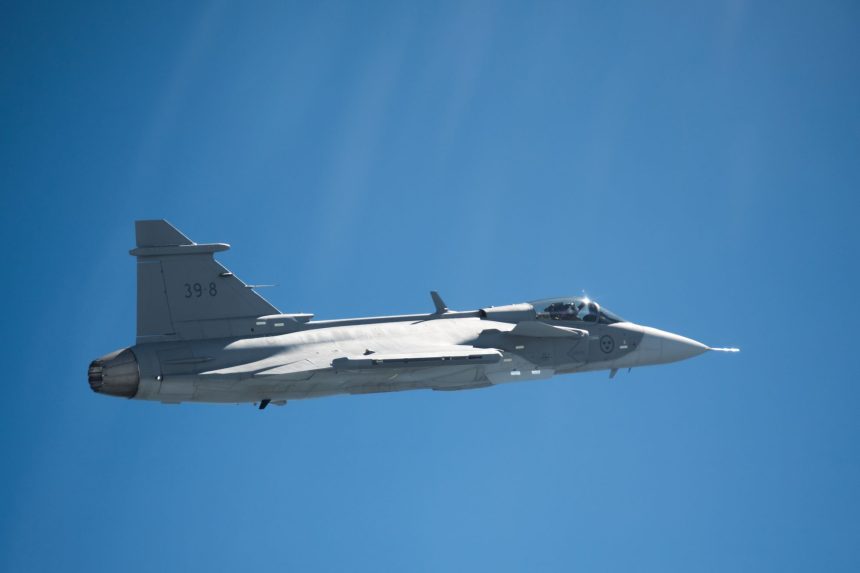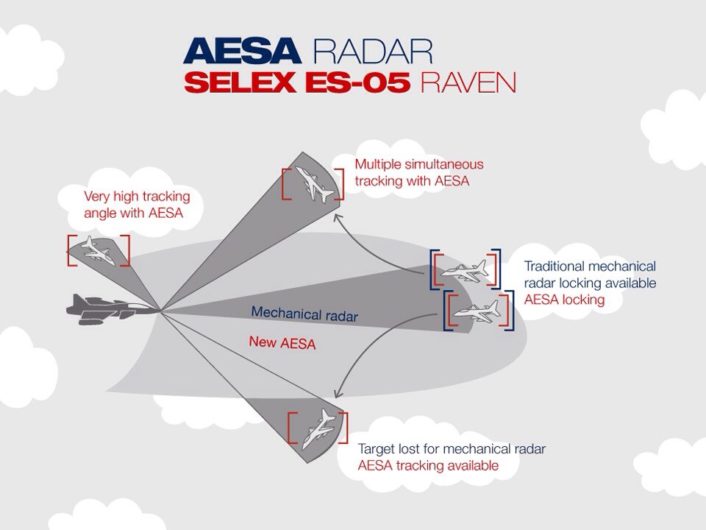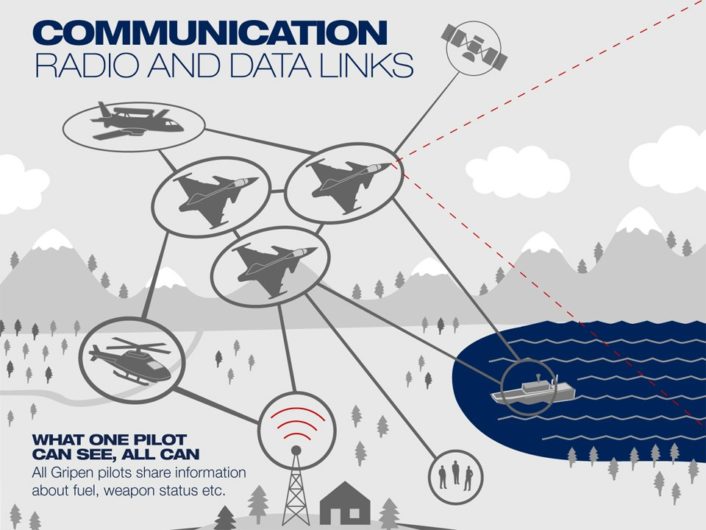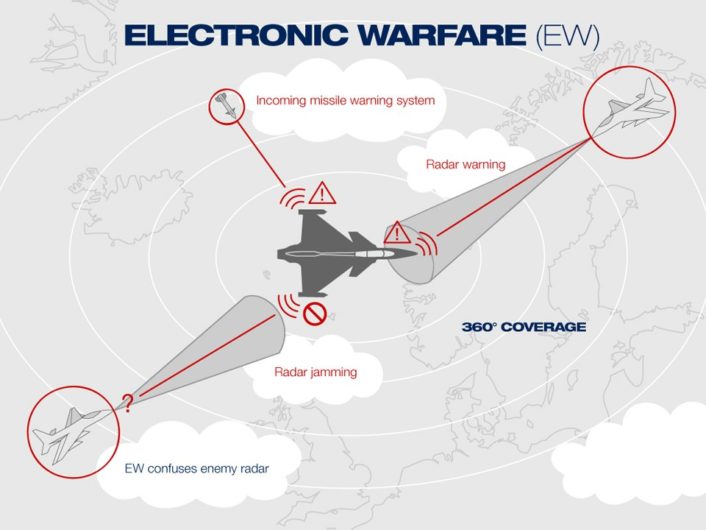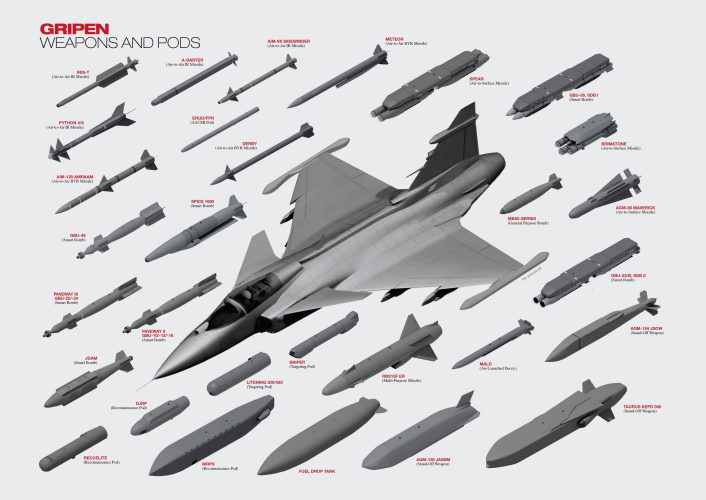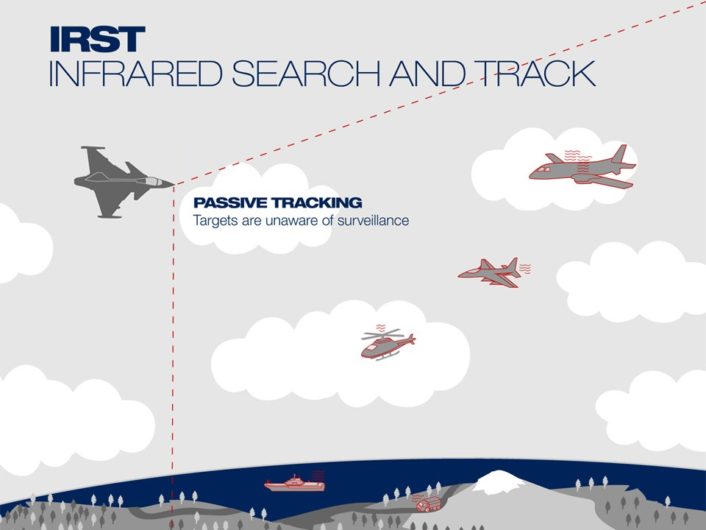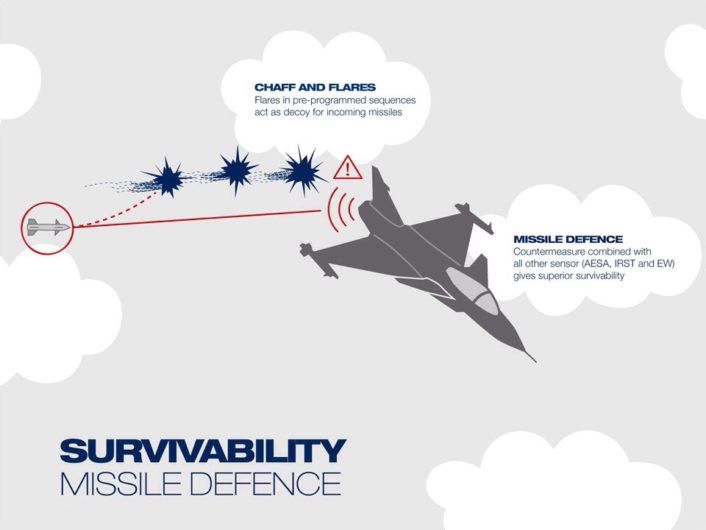First flight success for Gripen E
On Thursday June 15, at 10:32LT, the Gripen E aircraft (designation 39-8) took off on its maiden flight from Saab’s airfield in Linköping, Sweden.
Flown by a Saab test pilot, the aircraft flew over the eastern parts of Östergötland for 40 minutes and along with retracting and extending the landing gear, carried out a number of basic maneuvers.
“The flight was just as expected, with the aircraft performance matching the experience in our simulations. Its acceleration performance is impressive with smooth handling. Needless to say I’m very happy to have piloted this maiden flight,” says Marcus Wandt, Experimental Test Pilot, Saab, in a statement.
The aircraft, a new multirole variant of the Gripen fighter, based on the proven C/D platforms tailored for the future Network Centric Warfare (NCW) environment, was officially unveiled at the company base in Likoping, Sweden, on May 18, 2016.
The aircraft is much similar to its predecessor: an IRST (Infra Red Search and Track) bump in front of the cockpit in the nose section as well as the missile warning system on the air intakes are the main external differentiators.
According to Saab, Gripen E offers operational dominance and flexibility with superior mission survivability. Air-to-air superiority is guaranteed with METEOR, AMRAAM, IRIS-T, AIM-9 missile capability and supercruise.
Air-to-surface capability is assured through the use of the latest generation precision weapons and targeting sensors. Gripen E’s superior situation awareness is ensured through an AESA radar, IRST passive sensor, HMD (Helmet Mounted Display), cutting-edge avionics, next generation data processing and a state-of-the-art cockpit.
Furthermore, its Network Centric Warfare capabilities include advanced data communications, dual data links, satellite communications and video links. On-board sensors, in combination with HMD/NVG, deliver the ability to detect and destroy a wide variety of targets, even at night or in poor weather conditions.
“This is an important milestone in the development programme of Gripen E, of which first deliveries to Sweden and Brazil are expected by 2019. Gripen E has been designed with the future in mind, incorporating the most advanced technology and providing excellent tactical flexibility. As a truly multi-role fighter, fully NATO-interoperable, we are very confident that Gripen E meets the demanding operational requirements expressed by the Belgian Air Force as it seeks to replace its current fleet of fighter aircraft,” Per Alriksson, Campaign Director for Gripen in Belgium, said.
“Gripen E differs also from any other fighter aircraft with unrivalled cost efficiency in combination with advanced technology and operational effectiveness.”
The Gripen single-engine multirole fighter aircraft has already had some important export successes: the baseline JAS-39C currently serves with the Swedish, South African, Czech, Hungarian and Royal Thai Air Force, and there are orders in place in Brazil and Sweden, and some good chances to win other interesting bids, including Switzerland.
H/T Henry Blom for the heads-up

